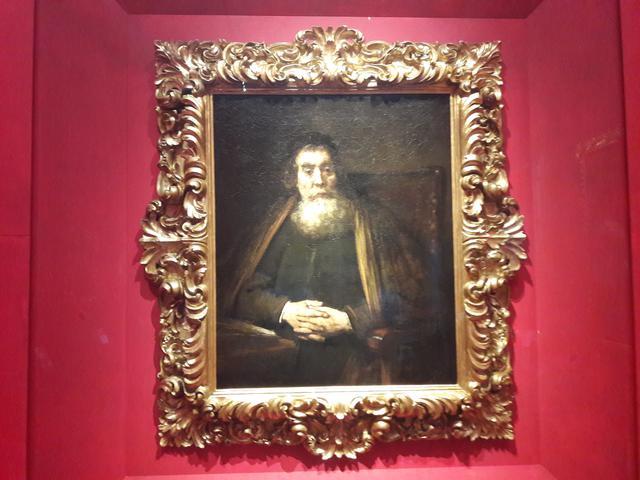The old rabbi

Signed and dated 1665, this portrait was created towards the end of Rembrandt's prolific artistic career, much of which was dedicated to portrait painting. In fact, it was as a portrait painter that Rembrandt became known in the 1630s in Amsterdam, where he lived for a long time in the Jewish quarter and often used neighbors and acquaintances as models for his paintings. The old man's face in the portrait has been identified as that of a rabbi; In fact, it has been suggested that the portrait may be attributed to a precise figure, Rabbi Haham Saul Levy Morteira, but the documents do not yet confirm this. In the portrait, Rembrandt studies the psychology of the old man, emphasizing the individuality of his expression and the impression of being lost in his thoughts, which seem swallowed up by the dark background of the painting. This tone is emphasized by the artist's technique, characterized by the use of textured colors that spread thickly over the canvas.
The quality of the painting did not escape the attention of Napoleonic officials and from 1799 to 1815 the painting was transferred to Paris, and then returned to Florence in 1834 to be exhibited in the Palatine Gallery of the Pitti Palace.
© Tourblink